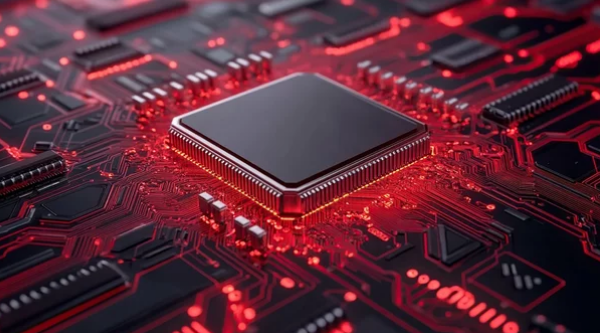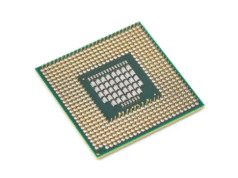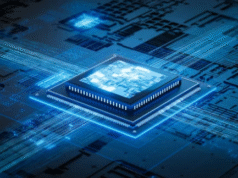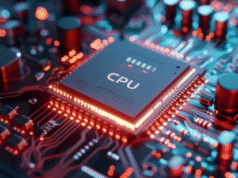The Central Processing Unit (CPU), often referred to as the “brain of the computer,” has come a long way since its early days. From a time when it could only perform one task at a time to today’s multi-core, high-performance powerhouses, the CPU has evolved into one of the most crucial components in modern technology.
This article explores the history, development, and future of CPUs—tracing their path from single-core chips to the multi-core monsters driving today’s digital world.
What Is a CPU? A Quick Refresher
A CPU is the component responsible for executing instructions that make up computer programs. It performs calculations, makes decisions, and manages data flow in your system. Every time you open a file, play a game, or type a message, your CPU is hard at work.
In simple terms, it’s the central coordinator that tells the rest of your hardware what to do and when to do it.
The Early Days: Single-Core Simplicity
The story of the CPU began in 1971 with the launch of the Intel 4004, the world’s first commercially available microprocessor. It was a 4-bit single-core chip capable of performing around 92,000 instructions per second—impressive at the time but tiny by today’s standards.
Characteristics of early CPUs:
- One core for processing one task at a time
- Low clock speeds (measured in kilohertz)
- Used in basic devices like calculators and embedded systems
These early processors laid the groundwork for modern computing, even if their capabilities were limited.
Scaling Up: Clock Speeds and Megahertz Mania
By the 1980s and 1990s, CPU technology advanced rapidly. Chips became more efficient, and clock speeds increased from kilohertz to megahertz (MHz) and eventually gigahertz (GHz). Processors like the Intel 386, 486, and Pentium became household names.
During this time:
- CPUs still had only one core
- Performance increases came from higher clock speeds and better instruction handling
- The focus was on faster sequential task execution
The industry was caught in a “clock speed race,” where companies pushed CPUs to run faster and faster to improve performance.
The Clock Speed Wall: The Need for a New Approach
By the early 2000s, CPUs had reached clock speeds of over 3 GHz. But pushing beyond that led to problems:
- Overheating: More speed meant more heat.
- Power consumption: CPUs were using excessive energy.
- Diminishing returns: Performance gains didn’t match the increase in power usage and heat output.
This led engineers to look for a better solution—one that didn’t rely solely on clock speed.
The Multi-Core Revolution: A New Era Begins
The solution was to add more cores instead of increasing clock speed. Each core could handle its own set of instructions, allowing the CPU to perform multiple tasks simultaneously—a concept known as parallel processing.
Key milestones in multi-core development:
- 2005: Intel introduced the Pentium D, its first dual-core desktop processor.
- 2006: AMD released its Athlon 64 X2, a major step in mainstream multi-core computing.
- 2007–2010: Quad-core CPUs became the norm for desktops and laptops.
With multi-core CPUs, users could run antivirus scans, stream music, and browse the internet all at the same time—with little to no slowdown.
Today’s CPUs: Multi-Core Monsters
Modern CPUs have become incredibly advanced. It’s not uncommon to see:
- 6-core and 8-core processors in laptops
- 12-core and 16-core CPUs in gaming and content creation PCs
- 32-core or 64-core processors in professional workstations and servers
Some high-end processors, like AMD’s Threadripper or Intel’s Xeon, are even used for AI, video production, and 3D rendering—tasks that require massive parallel processing power.
Features of modern CPUs:
- Multi-threading (e.g., Intel’s Hyper-Threading or AMD’s SMT) allows each core to handle two tasks at once.
- Smart power management keeps systems cool and efficient.
- Integrated graphics and AI engines provide more functionality in smaller packages.
- Advanced cache systems and memory controllers increase speed and responsiveness.
CPU Cores vs. Threads: What’s the Difference?
- Core: A physical processing unit on the CPU.
- Thread: A virtual version of a core that can handle tasks separately.
A quad-core CPU with Hyper-Threading can handle up to eight threads, effectively acting like eight processors in parallel.
This is why CPUs with fewer cores but more threads can sometimes outperform others in multitasking scenarios.
Why Multi-Core Matters for You
Whether you’re a gamer, a creator, or just someone who loves smooth performance, multi-core CPUs make a big difference.
Use Case Benefits:
- Gaming: Modern titles use multiple cores for smoother gameplay.
- Streaming: Games can run on some cores, while streaming software runs on others.
- Video Editing: Multi-core CPUs drastically reduce render and export times.
- Coding and Compiling: Developers benefit from faster compile speeds with more cores.
Even day-to-day multitasking—like running a browser, music app, and messaging platform at once—feels more responsive with a multi-core chip.
The Future of CPUs: Smarter, Smaller, Stronger
The next phase in CPU evolution is already underway:
- 3nm and 2nm technology: Smaller transistors mean more cores, better power efficiency, and less heat.
- AI integration: CPUs are starting to include AI accelerators for smart applications and real-time processing.
- ARM architecture: Companies like Apple are leading the shift with chips like the M1 and M2, which combine power and battery efficiency in one package.
- Hybrid architectures: Intel’s Alder Lake and newer CPUs feature performance cores and efficiency cores for better task distribution.
In the future, we’ll see CPUs that are not only faster but also adaptive, intelligent, and incredibly efficient.
Conclusion: A Chip That Changed the World
The CPU’s journey from single-core simplicity to multi-core dominance is one of constant innovation. What started as a basic processor in early computers has evolved into a technological marvel powering smartphones, gaming consoles, AI models, and even space exploration systems.
As we look ahead, the CPU continues to evolve—driving our devices, pushing the boundaries of what’s possible, and shaping the future of digital innovation.
Also Read :
- How a CPU Works: Explained in Simple Terms
- CPU vs GPU: What’s the Difference and Why It Matters
- What Is a CPU? A Beginner’s Guide to the Brain of Your Computer
















